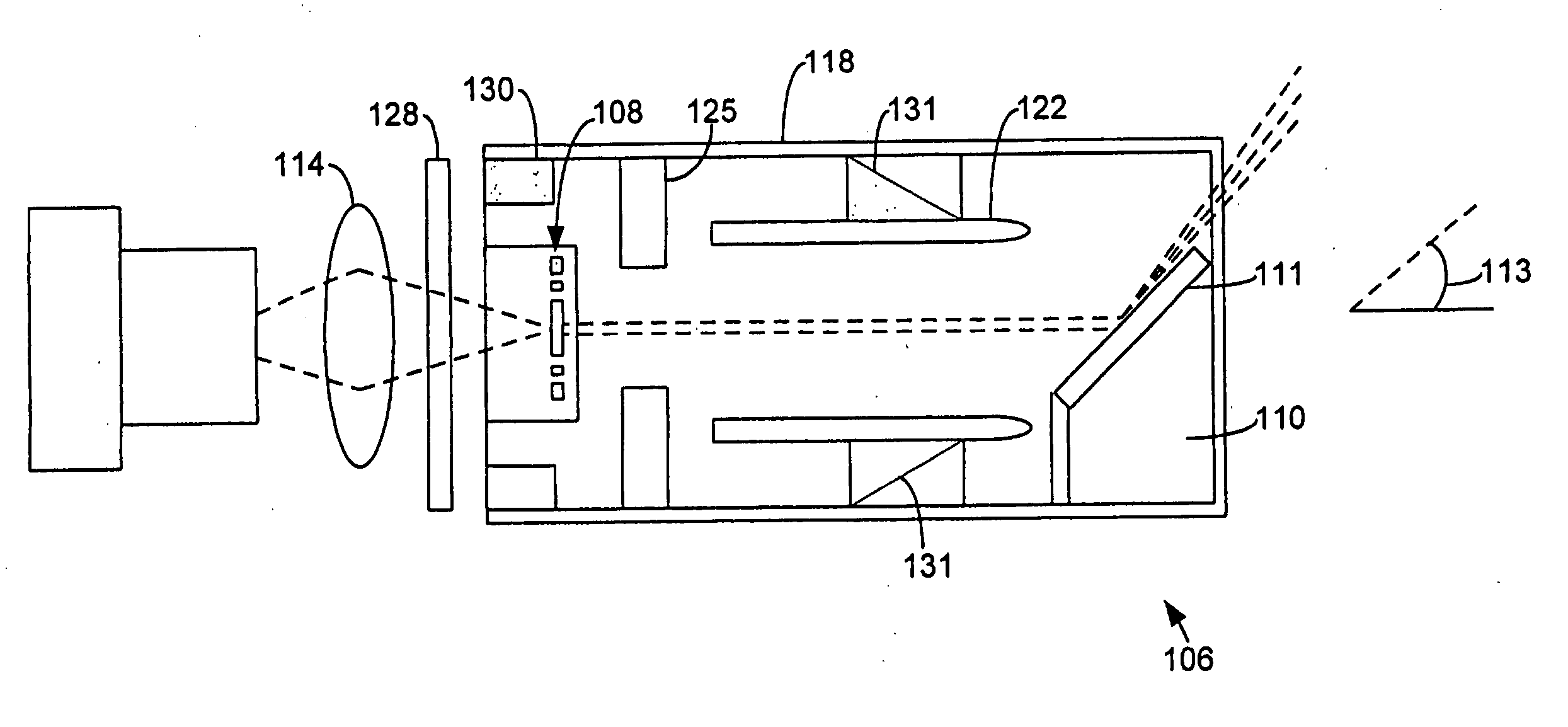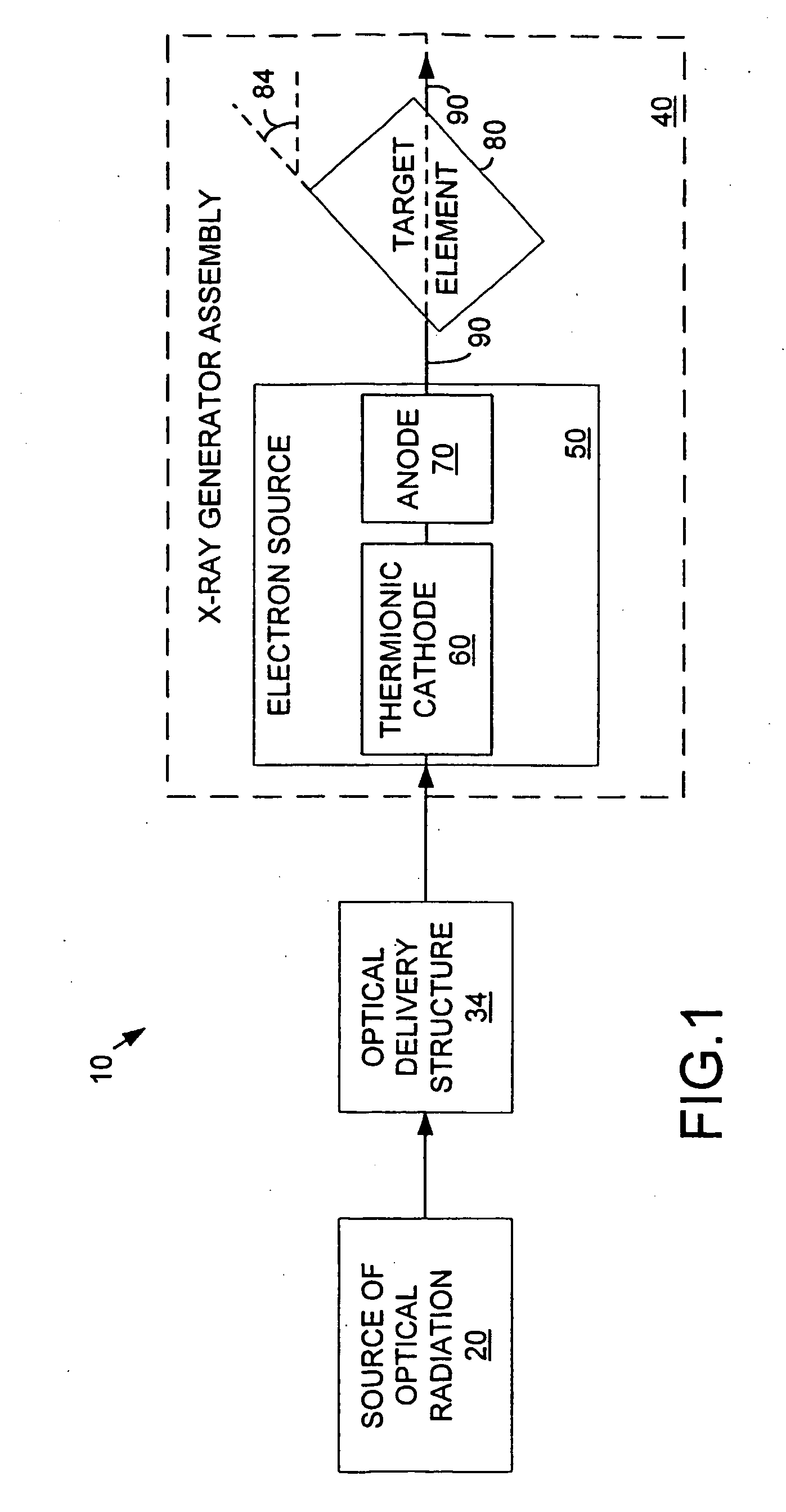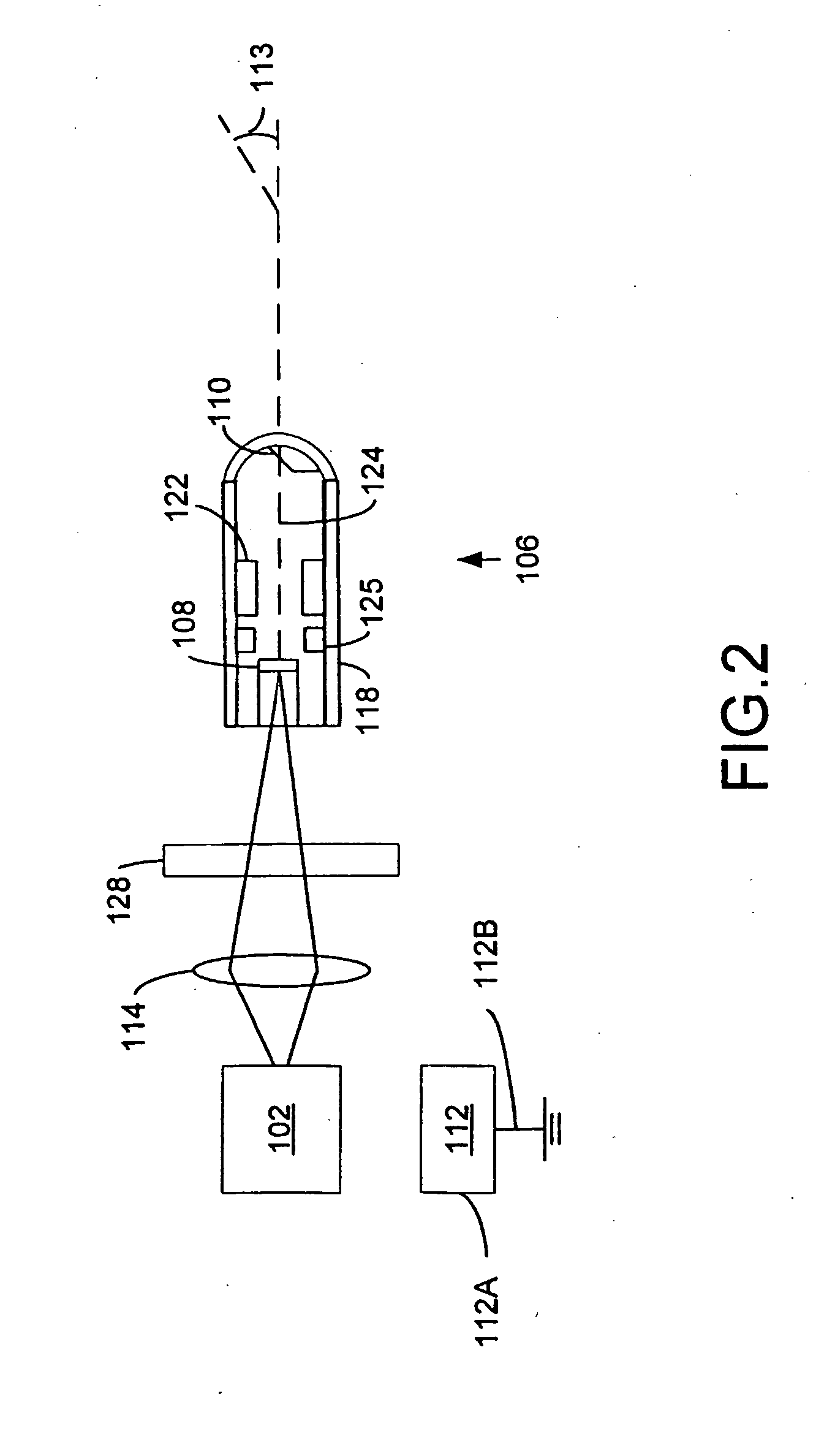X-ray source for materials analysis systems
a technology of x-ray source and materials analysis, applied in the field of radiation sources, can solve the problems of tube failure and radiation output degradation, and achieve the effects of reducing the power requirements of the x-ray source, rapid system turning on and off, and small size and mass
- Summary
- Abstract
- Description
- Claims
- Application Information
AI Technical Summary
Benefits of technology
Problems solved by technology
Method used
Image
Examples
Embodiment Construction
[0020] The present invention provides an optically driven, increased efficiency, miniaturized x-ray source for use in materials analysis systems. The x-ray source includes a laser-heated thermionic cathode, in contrast to prior art x-ray sources for materials analysis, which have resistively heated thermionic cathodes, or field emitter cathodes. Heating the thermionic cathode with a laser, rather than with a current, significantly reduces the power requirements for the x-ray source. The x-ray source includes an inclined-plane, grazing incidence target, by which the efficiency of x-ray generation may be improved.
[0021]FIG. 1 is a schematic block diagram of an overview of an x-ray source 10 for materials analysis, constructed according to the present invention. In overview, the x-ray source 10 includes an optical source 20, an optical delivery structure 30, and an x-ray generator assembly 40. The x-ray generator assembly 40 includes an electron source 50, an anode 70, and a target el...
PUM
 Login to View More
Login to View More Abstract
Description
Claims
Application Information
 Login to View More
Login to View More - R&D
- Intellectual Property
- Life Sciences
- Materials
- Tech Scout
- Unparalleled Data Quality
- Higher Quality Content
- 60% Fewer Hallucinations
Browse by: Latest US Patents, China's latest patents, Technical Efficacy Thesaurus, Application Domain, Technology Topic, Popular Technical Reports.
© 2025 PatSnap. All rights reserved.Legal|Privacy policy|Modern Slavery Act Transparency Statement|Sitemap|About US| Contact US: help@patsnap.com



